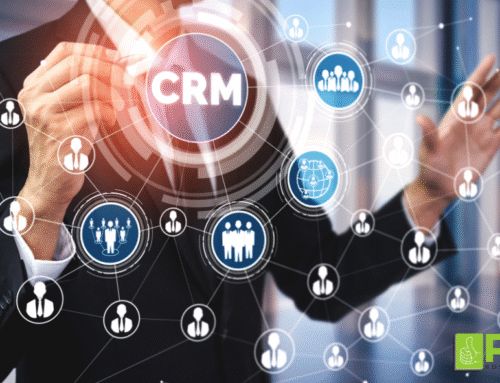Introduction
As your business grows, so does the complexity of your office equipment needs — especially when it comes to printing. What worked when you had a team of five might be holding you back with a team of 25. Choosing the right printer isn’t just about speed or color; it’s about aligning technology with your workflow, print volume, budget, and future plans.
This article breaks down everything business owners need to consider when selecting the right printer — whether you’re upgrading an outdated unit, setting up a new office, or trying to control printing costs as your team scales.
1. Assess Your Print Volume and Frequency
Before you even browse printer models, take a close look at how much printing your business does on a weekly and monthly basis.
-
Are you printing 50 pages a day, or 5,000?
-
Are most prints black and white or color?
-
Do you regularly print double-sided documents or just one-pagers?
-
Are there spikes in usage during certain seasons or events?
Your answers will determine whether you need:
-
A small workgroup printer
-
A departmental high-volume machine
-
Or even multiple machines spread across teams
📌 Pro Tip: Many managed print providers (like RDS Team) offer a free print audit to track usage and identify the right machine size.
2. Decide Between Inkjet vs. Laser
This is a common starting point — and for good reason.
-
Inkjet printers are great for color photos and smaller tasks. They’re often cheaper upfront but have higher ongoing ink costs.
-
Laser printers are ideal for high-volume printing, offering better per-page cost and faster output, especially in monochrome environments.
For most growing businesses, a mid-range color laser printer or MFP (multi-function printer) is the sweet spot for performance and value.
3. Identify Must-Have Features
Printers today can do a lot more than just print.
Make a checklist of the features you truly need. Common business requirements include:
-
✅ Scanning, copying, and faxing (multi-function)
-
✅ Duplex printing (prints both sides automatically)
-
✅ Wireless and mobile printing
-
✅ Secure printing with PIN access
-
✅ Large paper capacity and different paper sizes
-
✅ Finishing options like stapling or booklet printing
Adding extra features you don’t need increases your monthly lease or purchase cost — but missing critical functionality leads to inefficiency and frustration.
4. Factor in Security and Compliance
Cybersecurity is no longer just an IT issue — it’s a business-wide concern. Printers are often overlooked as potential security vulnerabilities.
If your company handles sensitive information (legal, healthcare, financial, etc.), make sure your new printer includes:
-
🔒 User authentication for print release
-
🔒 Data encryption and automatic deletion of stored print jobs
-
🔒 Secure cloud printing
-
🔒 Firmware updates and network segmentation
An unsecured printer can put your entire network at risk — and possibly violate compliance requirements like HIPAA.
5. Think About Workflow and Connectivity
Your printer should integrate seamlessly with your business workflows and apps. Ask:
-
Can your team print from mobile devices or tablets?
-
Does it support Google Drive, Dropbox, OneDrive, or SharePoint?
-
Can employees scan directly to email or network folders?
-
Can the printer be managed remotely?
Good connectivity boosts productivity. A great printer should adapt to your team — not force your team to adapt to it.
6. Choose Between Buying or Leasing
Should you own the printer outright or lease it?
Buying may be better if:
-
You want to avoid ongoing monthly payments
-
You don’t plan to upgrade for years
-
You have in-house IT who can handle repairs
Leasing makes sense if:
-
You want access to high-end technology without the large upfront cost
-
You want built-in service and toner delivery
-
You want the ability to upgrade every few years as your business grows
📌 Bonus: Leasing often includes full-service maintenance, repairs, and toner — turning printing into a predictable operating cost instead of a surprise expense.
7. Budget Carefully — Total Cost of Ownership Matters
When budgeting for a new printer, don’t just look at the sticker price.
Factor in:
-
Toner or ink costs
-
Maintenance and repair fees
-
Paper and energy usage
-
Software or licensing fees (if applicable)
-
IT time spent supporting the printer
Some printers may look cheap upfront but have a high cost-per-page. Others may be more expensive initially but save money long term through energy efficiency and bundled service.
Ask for a detailed cost-of-ownership projection before making a decision.
8. Consider Scalability and Upgrade Paths
Your business might be growing fast. Will this printer still meet your needs 12 months from now?
Ask:
-
Can you upgrade during your lease term?
-
Can this printer be part of a larger print fleet if you open a new location?
-
Are there add-ons (extra trays, finishers, upgraded firmware) you can activate later?
The right printer today should also be the right printer tomorrow.
9. Don’t Forget Support and Service
Even the best printer will have issues eventually. Make sure your vendor offers:
-
Fast on-site repairs (ideally same-day)
-
Preventative maintenance
-
Automatic toner monitoring and shipping
-
Easy access to local support — not a national call center
With RDS Team, for example, businesses in South Florida get local technicians, proactive support, and a dedicated account manager.
10. Consider a Managed Print Service (MPS)
If all this seems overwhelming, you’re not alone. That’s why many growing businesses turn to Managed Print Services.
An MPS partner handles:
-
Equipment recommendations and leasing
-
Maintenance and repair
-
Toner and supply management
-
Usage monitoring and reporting
-
Print security and IT integration
It’s a hands-off, stress-free way to ensure your print environment scales as your business does.
Final Thoughts
The right printer can streamline your team’s productivity and keep operations running smoothly. The wrong printer can waste time, frustrate staff, and quietly drain your budget.
Start by identifying your actual needs and usage, then weigh your options — from features and security to cost and support.
Don’t go it alone. A trusted partner like RDS Team can help you audit your environment, make recommendations, and ensure your printer is an asset — not a liability.
Call to Action
Ready to upgrade your printer but not sure where to start?
📞 Contact RDS Team today for a free office print consultation and expert guidance tailored to your growth.
💬 Visit RDSTeam.com/contact or call us at [Insert Phone Number]
Let’s grow your business — with smarter printing.
















